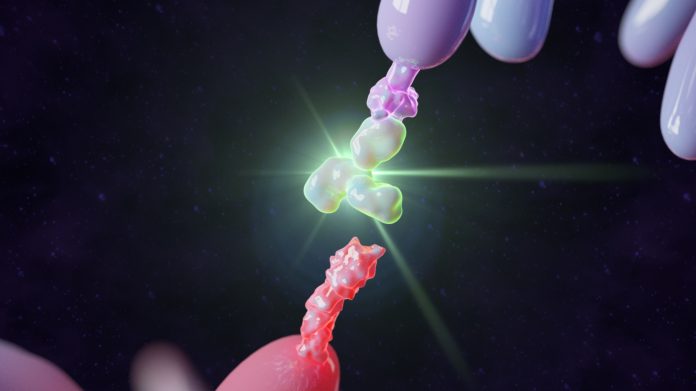
New research from the University of California, San Diego (UCSD), has uncovered surprising differences between humans and rodents in PD-1—a critical immune checkpoint protein. These findings, published in Science Immunology, challenge long-held assumptions and offer a possible explanation for the protein’s functional differences between the species.
The discovery of the PEQ motif
“It has been assumed that mouse and human PD-1 are functionally equivalent due to their conserved signaling motifs,” said Enfu Hui, PhD, co-senior author of the paper and an associate professor at UCSD. “However, our study shows that this assumption is flawed.” A pivotal discovery in their research is a three-amino-acid sequence termed the PEQ motif, present in human PD-1 but absent in its rodent counterpart. This motif stabilizes the binding of SHP-2, a phosphatase critical for PD-1’s role in attenuating T-cell signaling.
Without this motif, rodent PD-1 is less effective at recruiting SHP-2, leading to diminished T-cell suppression. This finding could help explain why some PD-1-based therapies are ineffective in humans, where PD-1 inhibition has become a cornerstone treatment strategy for some cancers.
Evolutionary perspectives
Using phylogenetic analysis, the researchers traced the divergence of PD-1 functionality back to the Cretaceous–Paleogene (K–Pg) boundary, a time of mass extinction approximately 66 million years ago. “Rodents appear to be the exception,” noted Hui. “Most vertebrates, including humans, retain the PEQ motif. Why rodents lost it during evolution remains an intriguing question, perhaps linked to survival advantages under changing environmental pressures or pathogen landscapes.”
Functional implications in humanized models
To further explore the functional ramifications of the PEQ motif, the team engineered “humanized” PD-1 in mice by replacing the intracellular domains of mouse PD-1 with their human counterparts. The results were striking: tumors grew significantly larger in these humanized mice compared to those with native mouse PD-1. This finding highlights the enhanced immunosuppressive strength of human PD-1 and its critical role in cancer progression.
“Our study implies that current preclinical models, which often rely on mouse PD-1, may underestimate the efficacy of anti-PD-1 therapies,” Hui explained. “Quantitative differences between species must be accounted for to fine-tune therapeutic strategies.”
First author Takeya Masubuchi, PhD, a postdoctoral fellow at UCSD, elaborated on the broader implications: “Our current knowledge of PD-1 signaling, largely derived from rodent studies, may not fully capture the complexities of human biology. Developing more humanized models or exploring non-rodent systems could provide deeper insights.”
Rethinking preclinical models
This research underscores the need for better models to study PD-1 and other checkpoint proteins. While rodents remain a staple of immunological research due to their accessibility and cost-effectiveness, their evolutionary divergence poses limitations.
“We need to rewrite the narrative,” said Masubuchi. “Humanized mouse models, while valuable, may only partially address these gaps. Primate models or other mammalian species with PD-1 structures closer to humans might be necessary for long-term solutions.”
The study also raises broader questions about the generalizability of rodent-based findings. As Hui pointed out, “Emerging research highlights significant molecular and cellular differences between mice and humans, especially in immune system genes. Our work rigorously demonstrates this for PD-1, a key target in cancer immunotherapy.”
Implications for cancer immunotherapy
By identifying and addressing these differences, the study provides a pathway to improve the predictive power of preclinical models. This is particularly critical for dose-response studies and understanding the mechanisms of PD-1 blockade.
“This work raises more questions than it answers,” Hui admitted. “But that’s the hallmark of impactful research. It’s an opportunity for us to collaborate and innovate better models, not just for PD-1 but for other immune checkpoints as well.”
Masubuchi emphasized the importance of this shift: “By acknowledging the limitations of our current models and striving for more accurate representations of human biology, we can enhance the development of life-saving therapies.”









![Best Weight Loss Supplements [2022-23] New Reports!](https://technologytangle.com/wp-content/uploads/2022/12/p1-1170962-1670840878.png)




